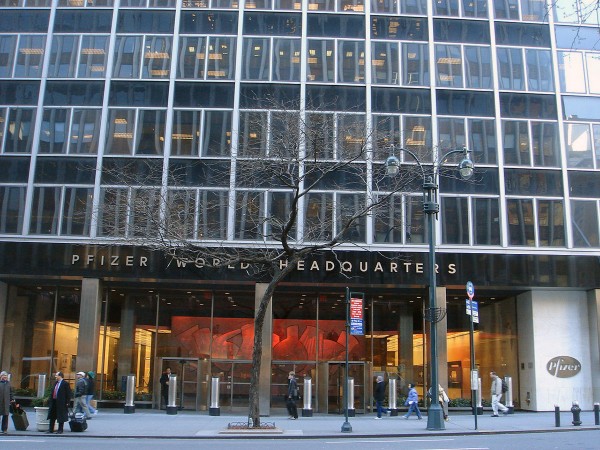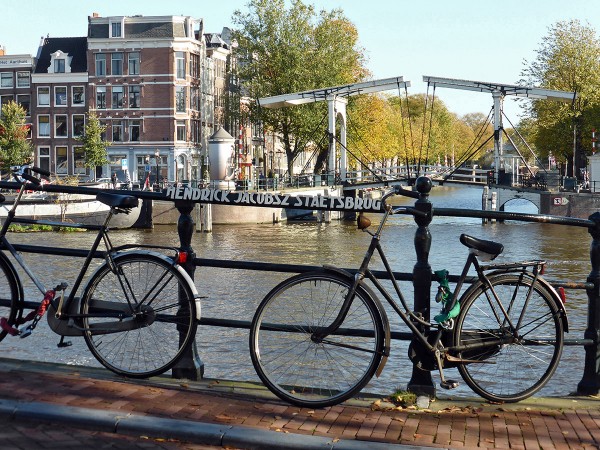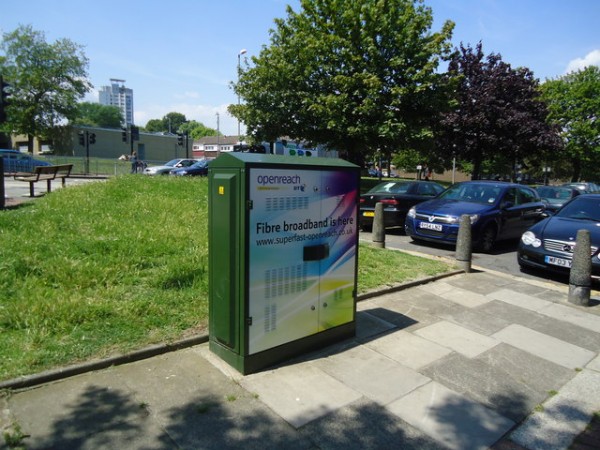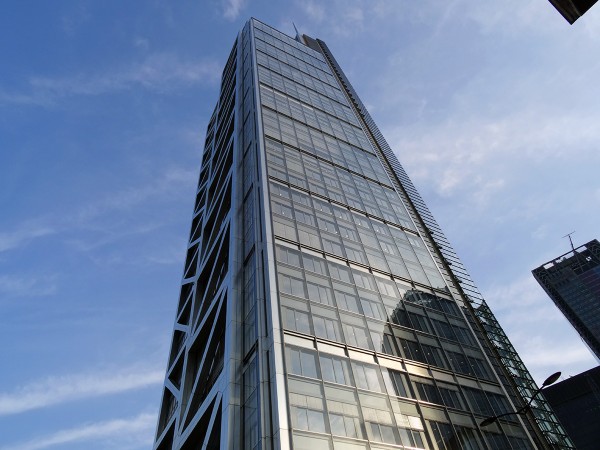 The Competition and Markets Authority (CMA) has imposed a record fine of £84m on the American pharmaceutical manufacturing company Pfizer and of £5.2m on its UK distributor, Flynn Pharma. The CMA found that the companies charged unfair prices to the NHS for phenytoin sodium capsules, the anti-epilepsy drug.
The Competition and Markets Authority (CMA) has imposed a record fine of £84m on the American pharmaceutical manufacturing company Pfizer and of £5.2m on its UK distributor, Flynn Pharma. The CMA found that the companies charged unfair prices to the NHS for phenytoin sodium capsules, the anti-epilepsy drug.
The price was previously regulated, but Pfizer deliberately de-branded the drug in September 2012 and immediately raised the price to Flynn Pharma by between 780% and 1600%, which, in turn, raised the price to the NHS by nearly 2600%. This made the drug many times more expensive than in any other European country.
The cost to the NHS rose from around £2m per year to around £50m in 2013. Although other generic drugs are available, there would be serious health risks to patients forced to switch drugs. The NHS thus had no alternative to paying the higher price.
 Pfizer claimed that the drug was loss-making before it was de-branded. However, the CMA calculated that this did not justify the size of the price increase; that the higher price enabled Pfizer to recover all these claimed losses within just two months.
Pfizer claimed that the drug was loss-making before it was de-branded. However, the CMA calculated that this did not justify the size of the price increase; that the higher price enabled Pfizer to recover all these claimed losses within just two months.
The usual practice is for pharmaceutical companies to charge high prices for new drugs for a period of time to enable them to recover high research and development costs. Later, the drugs become available as generic drugs that other manufacturers can produce. The price then normally falls dramatically.
Phenytoin sodium was invented many years ago and there has been no recent innovation and no significant investment. But, unlike with many other drugs, there has been no switching by the NHS because of possible dangers to patients. This has given Pfizer and its distributor considerable market power. As the CMA states in its press release:
Epilepsy patients who are already taking phenytoin sodium capsules should not usually be switched to other products, including another manufacturer’s version of the product, due to the risk of loss of seizure control which can have serious health consequences. As a result, the NHS had no alternative to paying the increased prices for the drug.
In conclusion, the CMA found that “both companies have held a dominant position in their respective markets for the manufacture and supply of phenytoin sodium capsules and each has abused that dominant position by charging excessive and unfair prices”.
Articles
Pfizer fined record £84.2m for overcharging NHS 2600% Independent, Zlata Rodionova (7/12/16)
Pfizer fined record £84.2m over NHS overcharging The Guardian, Angela Monaghan (7/12/16)
CMA fines drug firms £90m for over-charging NHS nhe (7/12/16)
Pfizer hit with record fine after hiking price of NHS epilepsy drug by 2,600pc – costing taxpayer millions The Telegraph (7/12/16)
Pfizer, Flynn Get Record Fine on 2,600% Drug Price Increase Bloomberg, Patrick Gower (7/12/16)
CMA publications
Phenytoin sodium capsules: suspected unfair pricing Competition and Markets Authority: Case reference: CE/9742-13, Competition and Markets Authority cases (updated 7/12/16)
CMA fines Pfizer and Flynn £90 million for drug price hike to NHS CMA Press Release (7/12/16)
Questions
- What are the arguments for drug companies being allowed to charge high prices for new drugs?
- How long should these high prices persist?
- Sketch a diagram to illustrate Pfizer’s price for its anti-epilepsy drug before and after it was de-branded. Illustrate the effect on Pfizer’s profits from the drug.
- What determines the price elasticity of demand for (a) a drug which is branded and unique; (b) a drug produced by a specific producer but which is generic and can be produced by a number of producers; (c) a generic drug produced by many producers?
- How should a regulator like the CMA decide what price a firm with market power should be allowed to charge?
- Under what legislation did the CMA fine Pfizer and Flynn Pharma? What is the upper limit to the fine it is able to impose? Did it impose the maximum fine on Pfizer?
 The articles below examine the rise of the sharing economy and how technology might allow it to develop. A sharing economy is where owners of property, equipment, vehicles, tools, etc. rent them out for periods of time, perhaps very short periods. The point about such a system is that the renter deals directly with the property owner – although sometimes initially through an agency. Airbnb and Uber are two examples.
The articles below examine the rise of the sharing economy and how technology might allow it to develop. A sharing economy is where owners of property, equipment, vehicles, tools, etc. rent them out for periods of time, perhaps very short periods. The point about such a system is that the renter deals directly with the property owner – although sometimes initially through an agency. Airbnb and Uber are two examples.
So far the sharing economy has not developed very far. But the development of smart technology will soon make a whole range of short-term renting contracts possible. It will allow the contracts to be enforced without the need for administrators, lawyers, accountants, bankers or the police. Payments will be made electronically and automatically, and penalties, too, could be applied automatically for not abiding by the contract.
 One development that will aid this process is a secure electronic way of keeping records and processing payments without the need for a central authority, such as a government, a bank or a company. It involves the use of ‘blockchains‘ (see also). The technology, used in Bitcoin, involves storing data widely across networks, which allows the data to be shared. The data are secure and access is via individuals having a ‘private key’ to parts of the database relevant to them. The database builds in blocks, where each block records a set of transactions. The blocks build over time and are linked to each other in a logical order (i.e. in ‘chains’) to allow tracking back to previous blocks.
One development that will aid this process is a secure electronic way of keeping records and processing payments without the need for a central authority, such as a government, a bank or a company. It involves the use of ‘blockchains‘ (see also). The technology, used in Bitcoin, involves storing data widely across networks, which allows the data to be shared. The data are secure and access is via individuals having a ‘private key’ to parts of the database relevant to them. The database builds in blocks, where each block records a set of transactions. The blocks build over time and are linked to each other in a logical order (i.e. in ‘chains’) to allow tracking back to previous blocks.
Blockchain technology could help the sharing economy to grow substantially. It could significantly cut down the cost of sharing information about possible rental opportunities and demands, and allow minimal-cost secure transactions between owner and renter. As the IBM developerWorks article states:
Rather than use Uber, Airbnb or eBay to connect with other people, blockchain services allow individuals to connect, share, and transact directly, ushering in the real sharing economy. Blockchain is the platform that enables real peer-to-peer transactions and a true ‘sharing economy’.
Article
New technology may soon resurrect the sharing economy in a very radical form The Guardian, Ben Tarnoff (17/10/16)
Blockchain and the sharing economy 2.0 IBM developerWorks, Lawrence Lundy (12/5/16)
2016 is set to become the most interesting year yet in the life story of the sharing economy Nesta, Helen Goulden (Dec 2015)
Blockchain Explained Business Insider, Tina Wadhwa and Dan Bobkoff (16/10/16)
A parliament without a parliamentarian Interfluidity, Steve Randy Waldman (19/6/16)
Blockchain and open innovation: What does the future hold Tech City News, Jamie QIU (17/10/16)
Banks will not adopt blockchain fast Financial Times, Oliver Bussmann (14/10/16)
Blockchain-based IoT project does drone deliveries using Ethereum International Business Times, Ian Allison (14/10/16)
Questions
- What do you understand by the ‘sharing economy’?
- Give some current examples of the sharing economy? What other goods or services might be suitable for sharing if the technology allowed?
- How could blockchain technology be used to cut out the co-ordinating role carried out by companies such as Uber, eBay and Airbnb and make their respective services a pure sharing economy?
- Where could blockchain technology be used other than in the sharing economy?
- How can blockchain technology not only record property rights but also enforce them?
- What are the implications of blockchain technology for employment and unemployment? Explain.
- How might attitudes towards using the sharing economy develop over time and why?
- Referring to the first article above, what do you think of Toyota’s use of blockchain to punish people who fall behind on their car payments? Explain your thinking.
- Would the use of blockchain technology in the sharing economy make markets more competitive? Could it make them perfectly competitive? Explain.
 This time last year bookmakers Ladbrokes and Coral announced their intention to merge. This was closely followed by a merger between Betfair and Paddy Power. This wave of consolidation appears to have been partly motivated by the rise of online gambling, stricter regulation and increased taxation.
This time last year bookmakers Ladbrokes and Coral announced their intention to merge. This was closely followed by a merger between Betfair and Paddy Power. This wave of consolidation appears to have been partly motivated by the rise of online gambling, stricter regulation and increased taxation.
The UK Competition and Markets Authority (CMA) commenced an initial investigation into the Ladbrokes-Coral merger in late 2015 and, at the request of the merging parties, agreed to fast track the case to a detailed phase 2 investigation.
Despite the growth in the online market, the CMA’s investigation recognised the continued importance of high-street betting shops:
Although online betting has grown substantially in recent years, the evidence we’ve seen confirms that a significant proportion of customers still choose to bet in shops – and many will continue to do so after the merger.
The CMA identified almost 650 local markets where it believed there would be a substantial lessening of competition. It concluded that this could have both local and national effects:
Discounts and offers of free bets to individual customers are 2 of the ways betting shops respond to local competition which could be threatened by the merger. Such a widespread reduction in competition at the local level could also worsen those elements that are set centrally, such as odds and betting limits.
Therefore, earlier this week the CMA announced that before it is prepared to clear the merger, the parties must sell around 350 stores in order to preserve competition in the problem markets (many of these overlap so the number of store sales required is less than the number of problem markets). This divestment represents around 10% of the total number of stores currently owned by the two merging parties. It appears that rivals Betfred and Boylesports, plus a number of private equity investors, are already interested in purchasing the stores.
This may also not be the last consolidation in the industry with the struggling leading bookmaker William Hill apparently attracting merger interest from rival 888 in combination with a casino and bingo hall operator.
Articles
BHA warns CMA over Coral-Ladbrokes merger Racing Post, Bill Barber (7/7/16)
Ladbrokes-Gala Coral must sell 350-400 shops to clear merger BBC, (26/7/16)
William Hill is lukewarm on ambitious three-way merger deal The Telegraph, Ben Martin (25/7/16)
Questions
- Why might the merging parties in this case have been so keen to fast track the case to phase 2?
- What are the key factors in defining the market in this case? How do you think these would have affected the decision?
- Are there arguments that wider social issues in addition to the effect on competition should be taken into account when considering mergers in this market?
- Which of the potential purchasers of the divested stores do you think might be best for competition?
- How do you think this market will evolve in the future?
 Concerns have been expressed about the UK’s relatively poor record of upgrading broadband services so that households can receive ultrafast connectivity. Some commenters have argued that future economic growth prospects will be harmed if the UK continues to lag behind its leading rivals.
Concerns have been expressed about the UK’s relatively poor record of upgrading broadband services so that households can receive ultrafast connectivity. Some commenters have argued that future economic growth prospects will be harmed if the UK continues to lag behind its leading rivals.
Much of the fixed line system that allows people to connect to broadband was originally installed many years ago for the land-line telephone network. The so called ‘final mile’ consists of copper-based wiring that is carried from street cabinets to the premises of the end-user. This wiring is transported via a huge network of telegraph poles and cable ducts (small underground tunnels).
In order for people to gain connectivity to ultrafast broadband this copper based wiring needs to be replaced by fibre optic cables. This is commonly referred to as Fibre to the Premises (FTTP). Unfortunately, the UK has a relatively poor record of installing FTTP. Japan and Korea were forecast to have 70% and 63% coverage by the end of 2015 as opposed to just 2% in the UK.
Why is the UK’s record so poor? Many observers blame it on the structure of the industry. In other network industries, such as those for gas pipeline and electricity grids, the business responsible for managing the infrastructure, National Grid, is a regulated monopoly. This company does not directly supply services to consumers using the network it is responsible for maintaining. Instead, customers are supplied by the retail sector of the industry, where firms compete for their business. This sector includes the so-called ‘big six’ (British Gas; npower; SSE; Scottish Power; EDF; E.On) and a number of smaller suppliers such as Ovo Energy and Ebico.

The structure of the fixed line telecommunications sector is very different. The company that manages the ‘final mile’, Openreach, is a subsidiary of BT. BT also competes with other Internet Service Providers (ISPs), such as TalkTalk and Sky, to supply broadband to customers using this network. Its market share of 32 per cent makes it the largest player in the broadband market. Sky and TalkTalk have market shares of 22 per cent and 14 per cent respectively. Virgin Media also supplies 20 per cent of this market using its own network of ducts and cables.
Given that in most cases ISPs such as Sky and TalkTalk are stuck with the network Openreach provides, BT may have limited incentives to invest. It can still earn a good return from its infrastructure of copper-based wiring and avoid installing expensive FTTP. Dido Harding, the chief executive of TalkTalk, argued that:
“We need to separate Openreach from the rest of BT to create a more competitive, pro-investment market”
Ofcom, in its recent review of the market, has taken a different approach. Rather than creating an entirely separate monopoly business to manage the network (i.e. splitting Openreach from BT), the regulator instead opted for a policy of encouraging competition between different suppliers that deploy fibre optic cables. It states in the report that:
“We believe competition between different networks is the best way to drive investment in high-quality, innovative services for customers.”
This competition could come from ISPs such as TalkTalk and Sky or other smaller network providers such as CityFibre and Gigaclear.
One major problem with this approach is that potential new entrants might be deterred from entering the market because of the very high initial costs involved in building a new network in order to deploy FTTP. In particular, the costs of digging up the roads and laying the ducts are considerable. Matt Yardley, author of a study on the industry, said:
“It is widely accepted that civil works such as digging trenches account for up to 80% of broadband deployment costs.”
One way of reducing these costs and encouraging more competition is to allow rival firms access to the existing ducts and poles that are currently managed by Openreach. Once access has been obtained, these firms could effectively rent space inside the ducts and lay fibre optic cables alongside the existing copper-based wiring. Vodafone reported that a similar policy in Spain had reduced its capital expenditure of building FTTP by 40 per cent compared with constructing its own network of ducts and poles.
Ofcom first introduced this type of policy in 2010 when it launched its Physical Infrastructure Access (PIA) initiative. Unfortunately it has proved to be relatively unsuccessful with very little demand for PIA from rival firms. The success of this type of policy will depend on a number of factors including (1) the prices charged by Openreach to access and rent space inside the ducts; (2) the simplicity of any relevant administration; and (3) the availability and reliability of information about the ducts. With this last point, key issues include:
|
|
| • |
Where they are located . |
| • |
How much space is available: i.e. is there enough space for firms to lay fibre optic cables alongside the existing wiring? |
| • |
What condition they are in: i.e. are they flooded or clogged up with sand and mud, which will involve expensive work to make them usable again?
|
Firms did complain about the pricing structures and bureaucratic nature of the administration process under the PIA scheme. However, their most significant concerns were about the uncertainty that was created by the lack of information about the ducts and poles. For example, analysts from the consultancy firm, Reburn, argued that if a firm contacted Openreach to try to obtain access to the network it was informed that:
“We don’t know what condition the ducts and poles are in. Please pay £10 000 for a survey. Also unfortunately we are rather busy and we can only start in six weeks.”
Matthew Hare, the chief executive of Gigaclear, argued that it was like going to a shop where the assistant says:
“Give me some money, and I’ll tell you whether you can have it or not.”
In response to these criticisms Ofcom has introduced a number of changes to PIA, which has been re-named Duct and Pole Access (DPA). In particular, it has imposed a new requirement on Openreach to create a database that provides information on the location, condition and capacity of its ducts and poles. The database must be made available to rival ISPs and network providers. DPA must also be provided on the same timescales, terms and conditions to all businesses including other parts of BT – this is referred to as ‘equivalence of inputs’.
The first big test of this policy is in Southend where City Fibre is hoping to deploy 50km of fibre optic cables using DPA. However, reports in the media have suggested that the initial surveys have found very limited capacity in some of the ducts, which would make DPA impossible.
It will be interesting to see how the trial in Southend progresses. If it is successful, then DPA may be viable for about 40 per cent of premises in the UK. If it fails, then Ofcom might ultimately have to force Openreach to be completely separated from BT.
Articles
How the gothic city of York became a broadband battleground The Telegraph, Kate Palmer (22/5/16)
City Fibre first to mount BT challenge after Openreach is told to share network The Telegraph, Kate Palmer (1/3/16)
Challenges as CityFibre Moot Using BT Cable Ducts in Southend-on-Sea ISPreview, Mark Jackson (2/5/16)
CityFibre to build pure fibre infrastructure for Southend Networking (5/4/16)
Ofcom tells BT to open up infrastructure to rivals The Guardian, Rob Davies (26/2/16)
Questions
- Draw an average total cost curve to illustrate the economics of building a network of ducts and poles. Label the minimum efficient scale.
- To what extent does DPA create a contestable market?
- For DPA to deliver productive efficiency, what must be true about the economies of scale of laying fibre optic cables?
- In the run-up to Ofcom’s review of the telecoms industry, many commentators described Openreach as being a natural monopoly. To what extent do you agree with this argument?
- What are the advantages of marginal cost pricing? What issues might a regulator face if it tried to impose marginal cost pricing on a natural monopoly?
- Using a diagram, explain how the network of ducts and poles might be a natural monopoly in rural areas but not in densely populated urban areas.
- Discuss how Ofcom has tried to increase the level of separation between Openreach and BT.
 In the following article, Joseph Stiglitz argues that power rather than competition is a better starting point for analysing the working of capitalism. People’s rewards depend less on their marginal product than on their power over labour or capital (or lack of it).
In the following article, Joseph Stiglitz argues that power rather than competition is a better starting point for analysing the working of capitalism. People’s rewards depend less on their marginal product than on their power over labour or capital (or lack of it).
As inequality has widened and concerns about it have grown, the competitive school, viewing individual returns in terms of marginal product, has become increasingly unable to explain how the economy works.
Thus the huge bonuses, often of millions of pounds per year, paid to many CEOs and other senior executives, are more a reflection of their power to set their bonuses, rather than of their contribution to their firms’ profitability. And these excessive rewards are not competed away.
Stiglitz examines how changes in technology and economic structure have led to the increase in power. Firms are more able to erect barriers to entry; network economies give advantages to incumbents; many firms, such as banks, are able to lobby governments to protect their market position; and many governments allow powerful vested interests to remain unchecked in the mistaken belief that market forces will provide the brakes on the accumulation and abuse of power. Monopoly profits persist and there is too little competition to erode them. Inequality deepens.
According to Stiglitz, the rationale for laissez-faire disappears if markets are based on entrenched power and exploitation.
Article
Monopoly’s New Era Chazen Global Insights, Columbia Business School, Joseph Stiglitz (13/5/16)
Questions
- What are the barriers to entry that allow rewards for senior executives to grow more rapidly than median wages?
- What part have changes in technology played in the increase in inequality?
- How are the rewards to senior executives determined?
- Provide a critique of Stiglitz’ analysis from the perspective of a proponent of laissez-faire.
- If Stiglitz analysis is correct, what policy implications follow from it?
- How might markets which are currently dominated by big business be made more competitive?
- T0 what extent have the developments outlined by Stiglitz been helped or hindered by globalisation?
 The Competition and Markets Authority (CMA) has imposed a record fine of £84m on the American pharmaceutical manufacturing company Pfizer and of £5.2m on its UK distributor, Flynn Pharma. The CMA found that the companies charged unfair prices to the NHS for phenytoin sodium capsules, the anti-epilepsy drug.
The Competition and Markets Authority (CMA) has imposed a record fine of £84m on the American pharmaceutical manufacturing company Pfizer and of £5.2m on its UK distributor, Flynn Pharma. The CMA found that the companies charged unfair prices to the NHS for phenytoin sodium capsules, the anti-epilepsy drug. Pfizer claimed that the drug was loss-making before it was de-branded. However, the CMA calculated that this did not justify the size of the price increase; that the higher price enabled Pfizer to recover all these claimed losses within just two months.
Pfizer claimed that the drug was loss-making before it was de-branded. However, the CMA calculated that this did not justify the size of the price increase; that the higher price enabled Pfizer to recover all these claimed losses within just two months.




